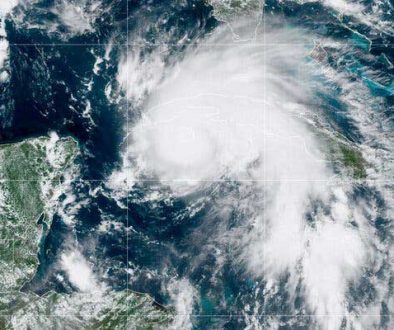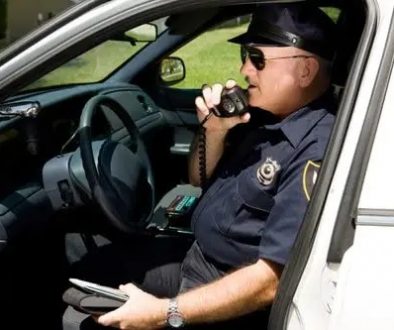Building a Layered Communications Network
The goal of AmRRON is to connect people with a layered communications network.
Even though the average citizen is NOT an Amateur Radio operator, this is a way to build a layered communications network that includes them in a standardized method of being able to communicate with one another. Because this link-up protocol is being distributed among various circles, if someone needed assistance they had the highest probability of linking up with someone of like-mind who could provide assistance.
The idea is to build a plan for layered communications network – what AmRRon calls the Ch3 Project.
Basic Family/Neighborhood in a Layered Communications Network
 Beginning at the family level or in your nearby neighborhood, the inexpensive handheld FRS radios are an excellent choice. These inexpensive radios are only short-range (within a mile or so) and do not require a license to operate.
Beginning at the family level or in your nearby neighborhood, the inexpensive handheld FRS radios are an excellent choice. These inexpensive radios are only short-range (within a mile or so) and do not require a license to operate.  But, these convenient radios can link those in a neighborhood together forming the first level for the AmRRon Channel 3 Project.
But, these convenient radios can link those in a neighborhood together forming the first level for the AmRRon Channel 3 Project.
In case of emergency, users are instructed to tune to channel 3 (462.6125 MHz) on their FRS radio to reach other AmRRon operators nearby. Users should attempt to transmit for about 2 minutes at the top of the hour and repeat every hour. To get accustomed to your radio, users are also encouraged to check in to the local Sedgwick County 2 Meter AmRRon net at 9 p.m. Saturday evenings.
 Another interesting option for the neighborhood level is a commercially-available or home built low power FM and AM transmitters broadcast station like described in the AmRRon Black Echo project. In an information black-out, when commercial broadcasting may be spurious or non-existent, Black Echo re-broadcasters can act as sources of information and reassurance to their communities on the FM and AM dials.
Another interesting option for the neighborhood level is a commercially-available or home built low power FM and AM transmitters broadcast station like described in the AmRRon Black Echo project. In an information black-out, when commercial broadcasting may be spurious or non-existent, Black Echo re-broadcasters can act as sources of information and reassurance to their communities on the FM and AM dials.
Community Layer
To reach outside the local neighborhood, Citizen’s Band (CB) radios can be used to build out a layered communications network — a simple, inexpensive community network. A CB base station can be installed in the home office, on the kitchen counter or in another “common area” with a suitable outdoor antenna used to provide longer range and better reliability. Using a common channel, such as the AMRRON channel 3, (26.985 MHz) CB can facilitate the creation of a community “party line.”
Mobile CB units installed in vehicles using a decent, center loaded magnetic mount antenna can be used to access the network or intercommunicate while traveling in groups.
The same general approach applied to CB radio works for GMRS radios. The cost is higher, requires a license to operate, but from a technical standpoint, GMRS radios are a high-quality option subject to minimal noise and interference.
Sure, the cell phone serves the same purpose, perhaps more elegantly, but by making regular use of the radio system, one learns how it works, becomes familiar with its range and limitations, and one can practice professional grade radio procedures so that this knowledge is intuitive when the radio system is really needed.
For licensed Amateur Radio Operators, they may choose to use the VHF/UHF bands with either a portable radio or more powerful base/mobile installations.
With a configuration of a base radio in the home, a mobile radio or two in the family vehicles and several hand-held radios, one can establish a good quality community level communications network.
The Amateur Radio Service Gateway
 In a major event, an experienced radio amateur is the key to accessing medium and long-haul communications networks. Using these networks, the ham radio operator can transmit and receive radiogram messages from across the state or across country in the absence of commercial telecommunications infrastructure.
In a major event, an experienced radio amateur is the key to accessing medium and long-haul communications networks. Using these networks, the ham radio operator can transmit and receive radiogram messages from across the state or across country in the absence of commercial telecommunications infrastructure.
An experienced AmRRon radio operator in your area that is skilled in AmRRon communications and/or net operations can interface via CB and GMRS/FRS providing a nice community network.
With a completed communications network, those individuals with only FRS radios can communicate with others nearby who in turn can communicate with more advanced stations providing a way to pass information upstream and down.
An example of a layered communications network
A local preparedness team might be made of up of around ten members or so. Their radio capabilities are structured as follows:
- Each family in the team has several FRS or GMRS radios for use around the neighborhood. Spare alkaline AA-cells are kept on hand to ensure the radios remain operational in the event of a long-term power outage.
- Each family has also installed a CB base station installed at their home. Some have it located on a bookshelf in the family room within earshot of the family during waking hours. Others have it installed in their home office or basement workshop. Everyone is tuned to “channel 3” or some other mutually acceptable channel.
- Everyone has a tactical call sign in the form of unit number or name, such as “Unit 1” or “Unit Charlie.”
- Everyone has been briefed on basic radio procedures and the team has familiarity with formatting both tactical messages and radiograms. The radios are also used for occasional conversation and social interaction to ensure operational readiness.
- Each team member also has a CB radio installed in their automobile. During long trips, the CB is used to monitor Channel 19 for information on highway conditions, accidents and reports of speed traps. In time of emergency, or when the team travels as a group, everyone has reliable, short-range communications available, even if the cellular grid fails.
- A couple members of the team have a strong interest in radio technology. They earned their ham radio licenses, became active in the local ham radio club, and developed the knowledge and skills needed to connect to AmRRon’s national messaging layer. These members are the “gateways” from the CB and FRS/GMRS channels to the long-haul networks on HF. These are the individuals who can take message to that relative on the other side of the country, format it if necessary, and inject it in the network. When the reply arrives, the same ham radio volunteer can deliver it to you via the group’s CB network. Using this gateway concept, the simple CB or GMRS radio becomes a valuable tool providing access to a nationwide emergency communications infrastructure.
In the above scenario, most of the team can spend a small amount of money on basic CB and FRS
equipment, but the network plan leverages a range of resources to transform those inexpensive basic
tools into something far more flexible and useful. In a sense, the sum is greater than the parts. This is
done by layering networks built around each technology, with each layer method incorporating a gateway
to the next level:
FRS talks to CB or GMRS; CB or GMRS talks to the local radio amateur; the local radio amateur communicates with the AmRRon national messaging layer and local Amateur Radio Emergency Service assets.




